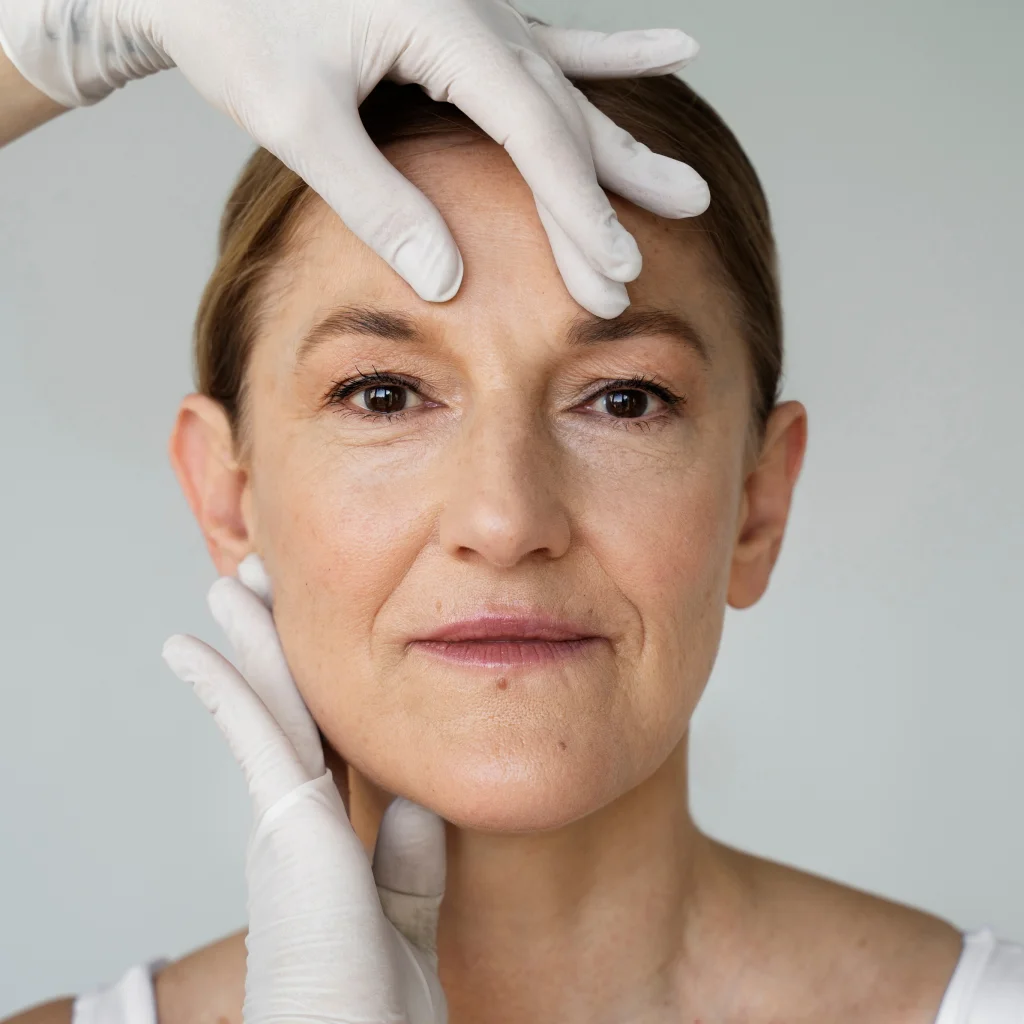Otoplasty
Otoplasty (Ear Surgery): Correcting Prominence
For individuals—both children and adults—who struggle with the appearance of prominent, protruding, or misshapen ears, the cosmetic impact can lead to lifelong self-consciousness. Otoplasty, often called Ear Pinning surgery, is a precise and highly effective procedure designed to correct these concerns, creating a more balanced, natural facial harmony.
At our New York and New Jersey practices, we specialize in advanced otoplasty techniques that subtly reposition the ears closer to the head and restore natural anatomical folds. Our goal is always a permanent, natural-looking result that resolves aesthetic concerns and, most importantly, restores confidence.
Otoplasty
What is Otoplasty?
Otoplasty is a surgical procedure performed to change the shape, position, or size of the ear. It is most frequently performed to address protruding or prominent ears—ears that stick out too far from the side of the head.
The prominence is usually due to one or a combination of two common structural issues:
- Lack of an Antihelical Fold: The natural inner curve or “fold” of the upper ear is missing or underdeveloped, causing the ear cartilage to flatten outward.
- Excessive Conchal Cartilage: The largest and deepest concavity of the outer ear (the concha) is oversized, pushing the entire ear away from the head.
Our approach to otoplasty is tailored to correct the specific anatomical defect, ensuring the ears look completely natural, symmetrical, and perfectly proportional to the rest of the face.
Otoplasty
Candidates and Ideal Timing
Otoplasty is unique in that it is often performed at a young age to prevent psychological distress.
Pediatric Otoplasty (Ages 5-7)
This is often the ideal age for the procedure, for critical reasons:
- Ear Growth is Complete: By age five or six, the ears have reached near-adult size, making it safe to proceed.
- Preventing Emotional Trauma: Performing the surgery before a child starts school or early elementary grades can prevent the psychological impact of teasing, bullying, and self-consciousness related to their ears.
- Cartilage Flexibility: Young cartilage is highly pliable, which facilitates easier reshaping and positioning.
Adult Otoplasty
The procedure is equally effective for adults who have lived with prominent ears their entire lives. Adult otoplasty can be performed using local anesthesia with sedation and offers a permanent solution to a lifelong concern.
The Procedure: Precision Techniques for Natural Results
As an expert plastic surgeon, our approach to otoplasty focuses on precision, subtle correction, and hiding all evidence of surgery.
Incision Placement
The primary incision is made behind the ear, in the natural crease where the ear meets the head. This placement ensures that any resulting scar is completely hidden from view.
Surgical Techniques
The technique used depends entirely on the specific cause of the prominence:
Suturing Technique (The Pinning): For patients whose ear is simply protruding, the surgeon uses permanent internal sutures to reshape the cartilage and secure the ear closer to the mastoid (bone behind the ear). This creates the missing antihelical fold without removing cartilage.
Cartilage Sculpting: For patients with excessive conchal cartilage, the surgeon may carefully remove a small, precise section of the conchal bowl before using sutures to set the ear back.
The final steps involve carefully closing the incision and applying a supportive head dressing to protect the new position during the initial healing phase. The entire procedure typically takes 1 to 2 hours.
Otoplasty
Recovery and Post-Operative Care
A smooth recovery is essential to ensure the permanent retention of the ear’s new shape.
Timeframe | What to Expect | Key Instruction |
First 24-48 Hours | Mild pain, controlled with prescribed medication. A bulky compression head dressing is in place. | Keep the head dressing dry and in place. Rest with the head slightly elevated. |
1 Week | The head dressing is removed during the first follow-up appointment. The ears will be slightly swollen, bruised, and feel numb. | Transition to wearing a soft, compressive headband at all times (except showering) for the next 2-4 weeks. |
2 Weeks | Return to school (children) or work (adults). Light activity can resume. | Continue wearing the headband nightly and avoid any activity that could bend the ears. |
6 Weeks | Swelling has significantly subsided. Strenuous contact sports should still be avoided. | The final result is nearing completion, offering a natural and symmetrical appearance. |
Otoplasty
Why Choose Our Practice for Otoplasty?
Otoplasty is a procedure that requires not only surgical precision but also an artistic eye for proportion and facial harmony.
- Artistry and Precision: Our board-certified surgeon is an expert in subtle ear reshaping, focusing on creating natural curves and angles that never look “pinned back” or unnatural. This level of aesthetic precision is crucial for a successful otoplasty.
- Patient-Centered Approach: We prioritize psychological comfort, particularly for our younger patients. Our consultations address the emotional component of the surgery, ensuring both the child and parents feel confident and supported.
- Hidden Scarring: By utilizing the crease behind the ear and meticulously managing tissue, we ensure your beautiful result is discreet, with scars that fade naturally over time.
If you or your child are considering Otoplasty, trust the surgeon who combines technical mastery with an unwavering commitment to natural aesthetics.
Otoplasty
Restore Balance with Otoplasty Experts
Ready to feel more confident with natural-looking results?
REQUEST YOUR PRIVATE CONSULTATION TODAY: (914) 874 – 0900
or simply fill out the form below to schedule your consultation







